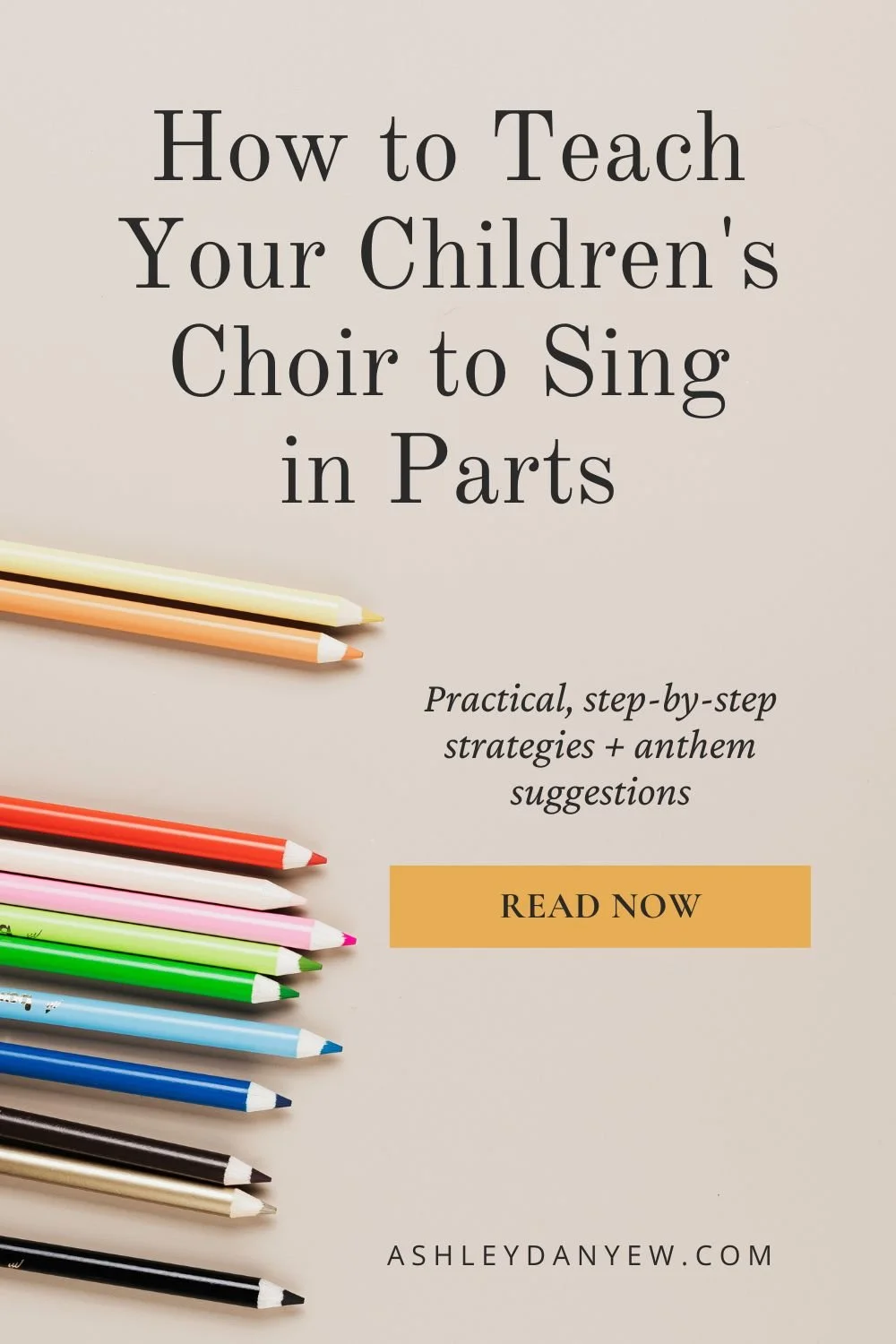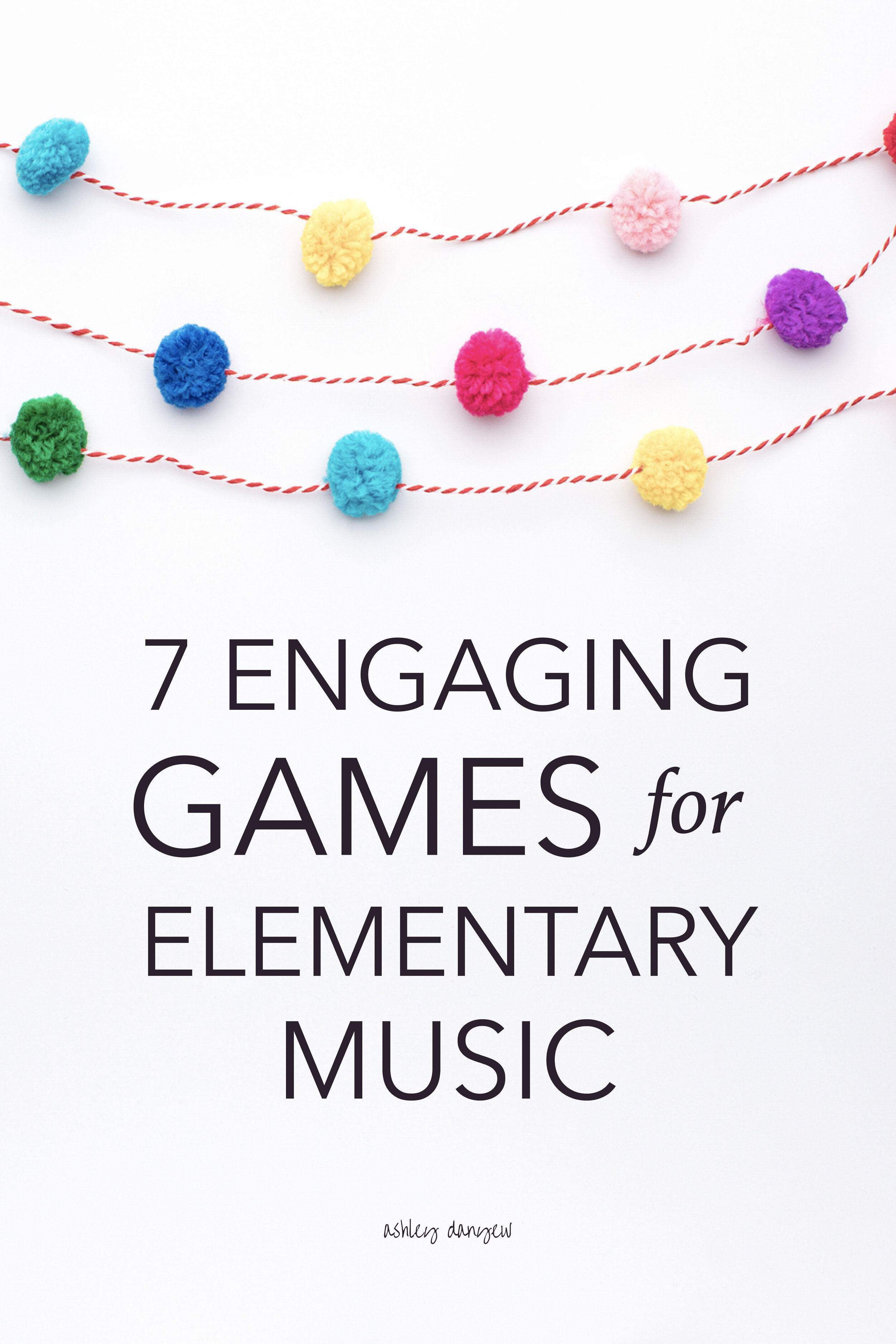If you go to the grocery store or the park or Target, you’re likely to hear it—the sound of a small child singing a song they know by heart (often looping through a favorite section over and over).
“The impulse to move, speak, sing, and play rhythmically is a natural and vital part of being human” (source). But, if it’s not encouraged and nurtured from an early age, children can “forget how to sing.”
This may lead you as the director to ask:
How can I help them rediscover their singing voice?
How can I help them develop their singing voices in choir?
Where do I start?
In today’s post, I’m walking you through the ins and outs of developing children’s singing voices in a choir setting—from vocal exploration to developing choral musicianship. Let’s get started!
*Disclosure: I get commissions for purchases made through links in this post.
Exploring the Voice
This is a vital step in the process.
Give children numerous opportunities in rehearsals to explore what their voices can do. This helps them build coordination and gain control of their voice, develop an understanding of the voice and what it means to sing, and build confidence.
As their director, it’s important to create guided experiences that will help them learn, grow, and discover; provide good models to imitate; and offer lots of encouragement along the way.
Start with more unstructured exploration, where children can explore their voices all together but at their own pace (and pitch). Ask guided questions like:
Can you make your voice sound like a siren?
Can you sigh?
Can you hoot like an owl? Or bray like a donkey?
Can you sound like a monkey?
Give the children a few seconds to respond to each one. You can do this with children as young as preschool age.
Echo patterns
Introduce some patterns for the children to echo. This is a great way to give examples of different types of voices and demonstrate inflection. Try phrases like, “Good morning!” “How are you?” “I’m sleepy.” “I’m excited!” etc. and have the choir echo you and match your vocal expression.
You might also try some expressive speaking, like rhythmic chants, rhymes, and short stories. Have the children echo you phrase-by-phrase or repeat a recurring phrase every time it comes up in the story.
Sound effects
Explore some vocal sound effects like, “sh,” rolled tongue, tongue clicks, "hee-haw," "who-who-who," humming, lip pops, chanting, scooping, vocal slides, etc., and look for ways to incorporate these sound effects into silly songs.
Alternatively, make a large poster-size chart/grid of these sound effects to display in your choir room. Point to one square and have them repeat that sound effect for 4-8 beats before moving on. Use this at the beginning of your rehearsal or in the middle as a quick change-of-pace activity.
Related post: 6 Strategies for Helping a Child Discover Their Singing Voice
Four voices
Review the four primary voices by chanting: “This is my whispering voice” and letting the children echo you. Repeat with shouting and speaking voice. When you get to the singing voice, sing the example instead of just chanting it.
Again, these activities can be done with children as young as preschool age.
Help your children develop their singing voices.
In this seminar, we’ll talk about the importance of vocal exploration, breath and movement, and vocal exercises that are appropriate for children’s voices, plus a few ideas for adding in something fun/silly to keep children engaged.
Listening and Responding
Call and response
Begin by singing a simple phrase and having the children echo you as a group. Once the children seem comfortable singing together, give them opportunities to sing their name or favorite color as a solo. Have everyone sit or stand in a circle and keep a steady beat as you go. Begin the song by singing a simple introduction like:
Consider passing a bean bag, ball, or microphone (prop—not to amplify their sound) so that children know when it’s their turn. Move around the circle in time—avoid stopping in between each child.
If a child feels uncomfortable singing alone, invite everyone to sing with them. Promote respect and lots of encouragement among singers. You can do this type of activity with children in preschool up through about 2nd grade.
Related post: 40 Call and Response Songs and Games
Repetition
Give children an opportunity to sing the same musical patterns and phrases multiple times by using cumulative songs or songs with a repeating verse or chorus. The opportunity to try again and sing the same phrase and patterns several times will help them develop listening skills and learn to sing more tunefully as a group.
As they go, try singing more softly and eventually dropping out so they have an opportunity to sing by themselves. Encourage and help them along with hand gestures and facial expressions.
Here are a few children’s songs that work well:
Oh, John the Rabbit
Oh, Won’t You Sit Down?
Down By the Bay
There’s a Hole in the Bottom of the Sea (cumulative)
Kindergarten and 1st-grade children especially love these types of activities!
Free resource: 38 Ways to Sing It Again
Singing and Moving
Much has been written on the relationship between singing and moving. Singing is a full-body activity (source) and movement invites children to connect and engage with music in a whole new way.
Movement helps develop critical listening skills, that all-important sense of steady beat, responsiveness, discernment, sensitivity to phrase-shaping and other elements of music expression, inner hearing, understanding of harmony and tension-release, and musicality. It also helps children develop coordination skills and connects the eye and ear and body and mind.
Related post: 10 Movement Activities for Children’s Choir
When introducing a song with movement, children may have a tendency to engage in the movement component and stop singing. Encourage them to sing as they move by teaching the song first:
Sing the song all the way through (without the piano), asking children to listen for something in particular (words, repeated patterns, dynamics, etc.).
Chant the words together, then sing the song phrase by phrase and have the children echo.
Review any phrases that need extra practice, singing it a few times (again, without the piano) until secure.
Briefly demonstrate the movements and explain any game rules.
Sing the song again with movements or sing and play the game. Leave time for several rounds or repetitions so children have an opportunity to really “get it."
Related post: How to Teach a Song or Anthem by Rote
Here are a few songs (geared toward 1st and 2nd graders) that incorporate movement or a game of some kind:
A Ram Sam Sam
Alley Alley-O
Circle ‘Round the Zero
Long-Legged Sailor
Miss Mary Mack
For more ideas, see 15 Singing Games for Children’s Choir.
Developing Skills
By the time children are in 1st or 2nd grade, they are ready to begin developing musicianship and choral singing skills, built on the solid foundation of vocal exploration, listening and responding, and singing and moving. One primary way to begin developing skills is through warm-ups.
Warm-ups
According to Josh Pedde of the Indianapolis Children’s Choir, "Warm-ups are where you teach your choir how to sing." Use a series of warm-up exercises (body, breath, vocal) at the beginning of every rehearsal and review proper posture (sitting, standing, relaxed).
For more specifics, see The Ultimate Guide to Children’s Choir Warm-Ups and Breathing Exercises for Choirs of All Ages.
Listening
For older elementary choirs, you can begin developing their listening skills throughout your rehearsal by drawing attention to things like crisp, clear consonants; pure vowels; smooth, lyrical singing; deep, low breaths; and long, sustained phrases.
From time to time, consider asking a few choristers to sit at the front of your rehearsal space to watch and listen for specific things, then tell the choir how they did.
Learn how to lead and teach your children’s choir, creatively and confidently.
Join me in Directing a Church Children’s Choir 101, a 4-week online training program geared specifically toward children’s choir directors in church settings.
A Few Final Suggestions
Use the piano as little as possible. Use the piano to give pitches and provide simple harmonic support once a melody has been learned, but avoid doubling their part, playing along on warm-ups, or modeling using just the piano.
Incorporate props such as a slinky, a funny puppet, a frisbee, tennis balls, balloons, and paper airplanes to show phrase-shaping, mouth shape, posture, etc., and illustrate abstract concepts such as breath, resonance, and high/low. The visual component will help them learn and add a fun element to your rehearsals!
Add hand motions to show breath, vowel shapes, and phrase-shaping. This is a great way to offer reminders without singing with the children all the time or speaking all of your directions and reminders.
For more suggestions, warm-up ideas, and song resources, see Sing Together, Children by Madeline Bridges.
I’d love to hear from you:
Do you do any of these activities with your choir? What are their favorites?
























